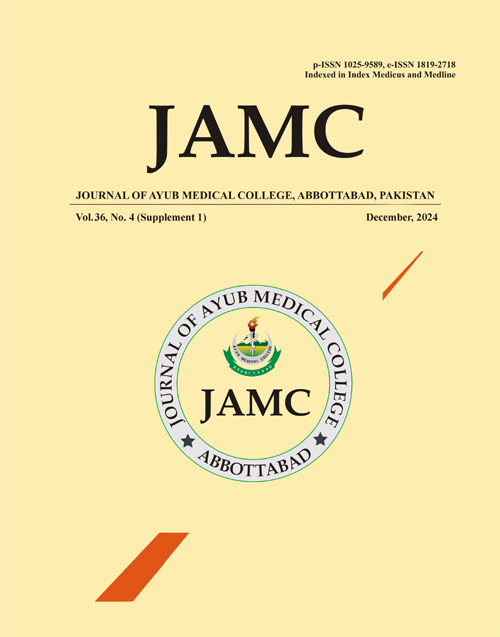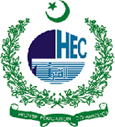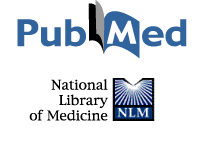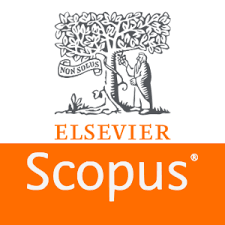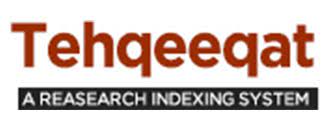ANALYZING THE ROLE OF HORMONAL THERAPY IN MODERN GYNECOLOGY: BALANCING TREATMENT AND RISK
DOI:
https://doi.org/10.55519/JAMC-S4-14697Keywords:
Hormonal therapy, gynecology, menopause, endometriosis, uterine fibroids, treatment outcomes, risks, patient careAbstract
Background: Hormonal therapy serves as a fundamental treatment strategy for various gynecological conditions, including menopause, endometriosis, and uterine fibroids. Medical professionals continue to debate the therapeutic advantages versus potential risks associated with its extensive clinical use. Contemporary gynecological practice must evaluate both the success rates and protective aspects of hormonal therapy to provide optimal patient care while minimizing adverse outcomes. This research investigates the role of hormonal therapy in gynecological practice by assessing its therapeutic effects and associated treatment risks to determine clinical feasibility. Methods: The study was conducted from October 2021 to September 2022 at Bilawal Medical College, LUMHS Jamshoro. The research sample comprised 100 female patients undergoing hormonal therapy for gynecological conditions. Data on treatment success, adverse effects, and patient satisfaction were collected through clinical examinations, laboratory evaluations, and face-to-face questionnaires. Statistical analysis was employed to assess the impact of hormonal therapy on disease management and the incidence of side effects. Results: The findings revealed that hormone-based treatments effectively reduced symptoms among patients with menopause and endometriosis—particularly pain, hot flashes, and vaginal dryness. Reported side effects included weight gain, mood fluctuations, and an increased risk of thromboembolic events in a minority of patients. Overall, the therapeutic benefits of hormonal therapy outweighed its disadvantages for most patients when treatment was tailored to individual clinical profiles. Conclusion: Hormonal therapy remains one of the primary and effective treatment modalities in gynecological practice. While it offers substantial symptom relief for various conditions, clinicians must carefully evaluate the associated risks. A personalized treatment approach, combined with consistent monitoring, is essential for achieving optimal patient outcomes.
References
1. Genazzani AR, Monteleone P, Giannini A, Simoncini T. Hormone therapy in the postmenopausal years: considering benefits and risks in clinical practice. Hum Reprod Update 2021;27(6):1115–50.
2. Klaiber EL, Vogel W, Rako S. A critique of the Women’s Health Initiative hormone therapy study. Fertil Steril 2005;84(6):1589–601.
3. Agency for Healthcare Research and Quality (AHRQ). Management of Menopausal Symptoms: AHRQ Comparative Effectiveness Review Protocol [Internet]. Rockville (MD): AHRQ; 2024. Available from: https://effectivehealthcare.ahrq.gov/sites/default/files/related_files/menopausal-symptoms-protocol-final.pdf
4. Mehta J, Kling JM, Manson JE. Risks, benefits, and treatment modalities of menopausal hormone therapy: current concepts. Front Endocrinol (Lausanne). 2021;12:564781.
5. Santen RJ, Allred DC, Ardoin SP, Archer DF, Boyd N, Braunstein GD, et al. Postmenopausal hormone therapy: an Endocrine Society scientific statement. J Clin Endocrinol Metab 2010;95(7 Suppl 1):S1–66.
6. Carmina E, Azziz R, Bergfeld W, Escobar-Morreale HF, Futterweit W, Huddleston H, et al. Female pattern hair loss and androgen excess: a report from the multidisciplinary androgen excess and PCOS committee. J Clin Endocrinol Metab 2019;104(7):2875–91.
7. Pinkerton JV. Hormone therapy for postmenopausal women. N Engl J Med 2020;382(5):446–55.
8. Cobin RH, Goodman NF; AACE Reproductive Endocrinology Scientific Committee. American Association of Clinical Endocrinologists and American College of Endocrinology position statement on menopause—2017 update. Endocr Pract 2017;23(7):869–81.
9. Al-Safi ZA, Santoro N. Menopausal hormone therapy and menopausal symptoms. Fertil Steril 2014;101(4):905–15.
10. Lobo RA, Pickar JH, Stevenson JC, Mack WJ, Hodis HN. Back to the future: hormone replacement therapy as part of a prevention strategy for women at the onset of menopause. Atherosclerosis 2016;254:282–90.
11. Horie NC, Cercato C, Mancini MC, Halpern A. Long-term pharmacotherapy for obesity in elderly patients: a retrospective evaluation of medical records from a specialized obesity outpatient clinic. Drugs Aging 2010;27(6):497–506.
12. Anagnostis P, Bosdou JK, Vaitsi K, Goulis DG, Lambrinoudaki I. Estrogen and bones after menopause: a reappraisal of data and future perspectives. Hormones (Athens). 2021;20(1):13–21.
13. Paciuc J. Hormone therapy in menopause. In: Hormonal Pathology of the Uterus 2020. p.89–120.
14. Hickey M, Elliott J, Davison SL. Hormone replacement therapy. BMJ 2012;344:e763.
15. US Preventive Services Task Force. Hormone therapy for the prevention of chronic conditions in postmenopausal women: recommendations from the US Preventive Services Task Force. Ann Intern Med. 2005;142(10):855–60.
Published
How to Cite
Issue
Section
License
Copyright (c) 2024 Jabeen Atta, Maryam Phulpoto, Zubair Ahmed Yousfani, Roohi Nigar, Muhammad Ammar Yousfani, Uzma

This work is licensed under a Creative Commons Attribution-NoDerivatives 4.0 International License.
Journal of Ayub Medical College, Abbottabad is an OPEN ACCESS JOURNAL which means that all content is FREELY available without charge to all users whether registered with the journal or not. The work published by J Ayub Med Coll Abbottabad is licensed and distributed under the creative commons License CC BY ND Attribution-NoDerivs. Material printed in this journal is OPEN to access, and are FREE for use in academic and research work with proper citation. J Ayub Med Coll Abbottabad accepts only original material for publication with the understanding that except for abstracts, no part of the data has been published or will be submitted for publication elsewhere before appearing in J Ayub Med Coll Abbottabad. The Editorial Board of J Ayub Med Coll Abbottabad makes every effort to ensure the accuracy and authenticity of material printed in J Ayub Med Coll Abbottabad. However, conclusions and statements expressed are views of the authors and do not reflect the opinion/policy of J Ayub Med Coll Abbottabad or the Editorial Board.
USERS are allowed to read, download, copy, distribute, print, search, or link to the full texts of the articles, or use them for any other lawful purpose, without asking prior permission from the publisher or the author. This is in accordance with the BOAI definition of open access.
AUTHORS retain the rights of free downloading/unlimited e-print of full text and sharing/disseminating the article without any restriction, by any means including twitter, scholarly collaboration networks such as ResearchGate, Academia.eu, and social media sites such as Twitter, LinkedIn, Google Scholar and any other professional or academic networking site.

